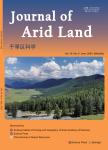Scenario simulation of water retention services under land use/cover and climate changes: a case study of the Loess Plateau, China
Scenario simulation of water retention services under land use/cover and climate changes: a case study of the Loess Plateau, China作者机构:State Key Laboratory of Soil Erosion and Dryland Farming on the Loess PlateauInstitute of Water and Soil ConservationChinese Academy of Sciences and Ministry of Water ResourcesYangling 712100China School of Resources and Environmental EngineeringWuhan University of TechnologyWuhan 430070China Institute of Surveying and MappingGuizhou Geology and Mineral Exploration BureauGuiyang 550018China
出 版 物:《Journal of Arid Land》 (干旱区科学(英文版))
年 卷 期:2022年第14卷第4期
页 面:390-410页
核心收录:
学科分类:0830[工学-环境科学与工程(可授工学、理学、农学学位)] 07[理学] 0706[理学-大气科学] 0713[理学-生态学]
基 金:supported by the State Key Laboratory of Soil Erosion and Dryland Farming on the Loess Plateau(A314021402–202110) the Science Foundation of Hubei Province,China(2021CFB295) the National Natural Science Foundation of China(42077451)。
主 题:water retention water yield land use/cover change climate change representative concentration pathway Markov-Cellular Automata model Loess Plateau
摘 要:Comprehensive assessments of ecosystem services in environments under the influences of human activities and climate change are critical for sustainable regional ecosystem management. Therefore,integrated interdisciplinary modelling has become a major focus of ecosystem service assessment. In this study, we established a model that integrates land use/cover change(LUCC), climate change, and water retention services to evaluate the spatial and temporal variations of water retention services in the Loess Plateau of China in the historical period(2000–2015) and in the future(2020–2050). An improved Markov-Cellular Automata(Markov-CA) model was used to simulate land use/land cover patterns, and ArcGIS 10.2 software was used to simulate and assess water retention services from 2000 to 2050 under six combined scenarios, including three land use/land cover scenarios(historical scenario(HS), ecological protection scenario(EPS), and urban expansion scenario(UES)) and two climate change scenarios(RCP4.5 and RCP8.5, where RCP is the representative concentration pathway). LUCCs in the historical period(2000–2015) and in the future(2020–2050) are dominated by transformations among agricultural land, urban land and grassland. Urban land under UES increased significantly by 0.63×10^(3) km^(2)/a, which was higher than the increase of urban land under HS and EPS. In the Loess Plateau, water yield decreased by 17.20×10^(6) mm and water retention increased by 0.09×10^(6) mm in the historical period(2000–2015),especially in the Interior drainage zone and its surrounding areas. In the future(2020–2050), the pixel means of water yield is higher under RCP4.5 scenario(96.63 mm) than under RCP8.5 scenario(95.46mm), and the pixel means of water retention is higher under RCP4.5 scenario(1.95 mm) than under RCP8.5 scenario(1.38 mm). RCP4.5-EPS shows the highest total water retention capacity on the plateau scale among the six combined scenarios, with the value of 1.27×10^(6) mm. Ecological restoration projects in the Loess Plateau have enhanced soil and water retention. However, more attention needs to be paid not only to the simultaneous increase in water retention services and evapotranspiration but also to the type and layout of restored vegetation. Furthermore, urbanization needs to be controlled to prevent uncontrollable LUCCs and climate change. Our findings provide reference data for the regional water and land resources management and the sustainable development of socio-ecological systems in the Loess Plateau under LUCC and climate change scenarios.



